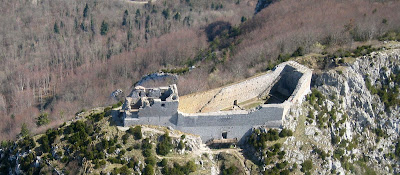The Waldensians are a Christian protestant group that originated in the Middle Ages and still exists, having survived—sometimes through severe persecution—for 800 years.
There was a time when they claimed to be older, claiming that they were established when St. Paul traveled to Spain. (Romans 15:15:23-28: “But now that there is no more place for me to work in these regions , and since I have been longing for many years to visit you, I plan to do so when I go to Spain.") Some Waldensian groups believed they were founded in the tome of Constantine. Others claimed their origin with certain known reformers such as Claudius of Turin (a Carolingian reformer and iconoclast) or Berengarius of Tours, an intellectual at the cathedral school of Chartres in the 11th century. These have been debunked in favor of the real founder, Peter Waldes (although there are questions about him, as well).
Waldensians started in the 1170s in Lyon in France, supposedly when Waldes, a wealthy merchant, had a personal conversion moment and decided to give away all his personal property and started preaching "apostolic poverty" as the true way to perfection in Christianity. The Church agreed with their choice of poverty, but did not like that Waldensians rejected the authority of local bishops. Nor did Waldensians care for the Church's opinion on who was fit to preach. They also rejected many of the trappings of the Church not found in the Bible: indulgences, the Mass, purgatory, and the papacy.
The Waldensians were declared heretical by 1215 at the Fourth Lateran Council (Canon 3 of the Council was about them and the Albigensians and Cathars). Persecution had already: more than 80 of the sect had been burned in Strasbourg. Pope Innocent III offered them (and the Cathars) to return to the Church's good graces by giving up some of their more radical ideas; those who did were renamed "Poor Catholics." Those who did not were subject to persecution, along with any other reform-based movement that did not conform.
1251 saw Waldensians in Toulouse massacred and the town burned down. Twenty-two villages in Provence were massacred when King Francis I of France decided to punish religious dissenters.
Later centuries saw worse treatment of the Waldensians. Pope Innocent VIII issued a bull for their extermination in 1487. The archdeacon of Cremona organized a crusade in the Piedmont that devastated the area and caused many to flee, until the Duke of Savoy intervened to prevent the further turmoil in his lands.
Besides persecution, however, they also embodied perseverance. These "proto-Protestants" are distinguished from the Protestant movements o the Renaissance because they did not record formal arguments against established Church doctrine, choosing to keep their practices simple and Bible-based. They persisted, and the 16th century found them most closely aligned with Calvinism.
Even after that, in January 1655, a less-admirable Duke of Savoy tortured and killed hundreds of Waldensians in what is called the Piedmont Easter. Twenty years later Louis XIV of France began a campaign to force Waldensians to become Catholics. A few years later, three days of combat resulted in 8000 surviving Waldensians (2000 were killed) thrown into prison.
It was not until 1848 that the Edict of Emancipation gave the Waldensian Church legal and political freedom. Pope Francis visited the Waldensian Church in Turin, Italy and apologized for the past actions of the Church.
Their logo (shown here) has a Latin motto that means "a light shining in darkness."
Tomorrow I want to tell you more about their origin, and their founder.











